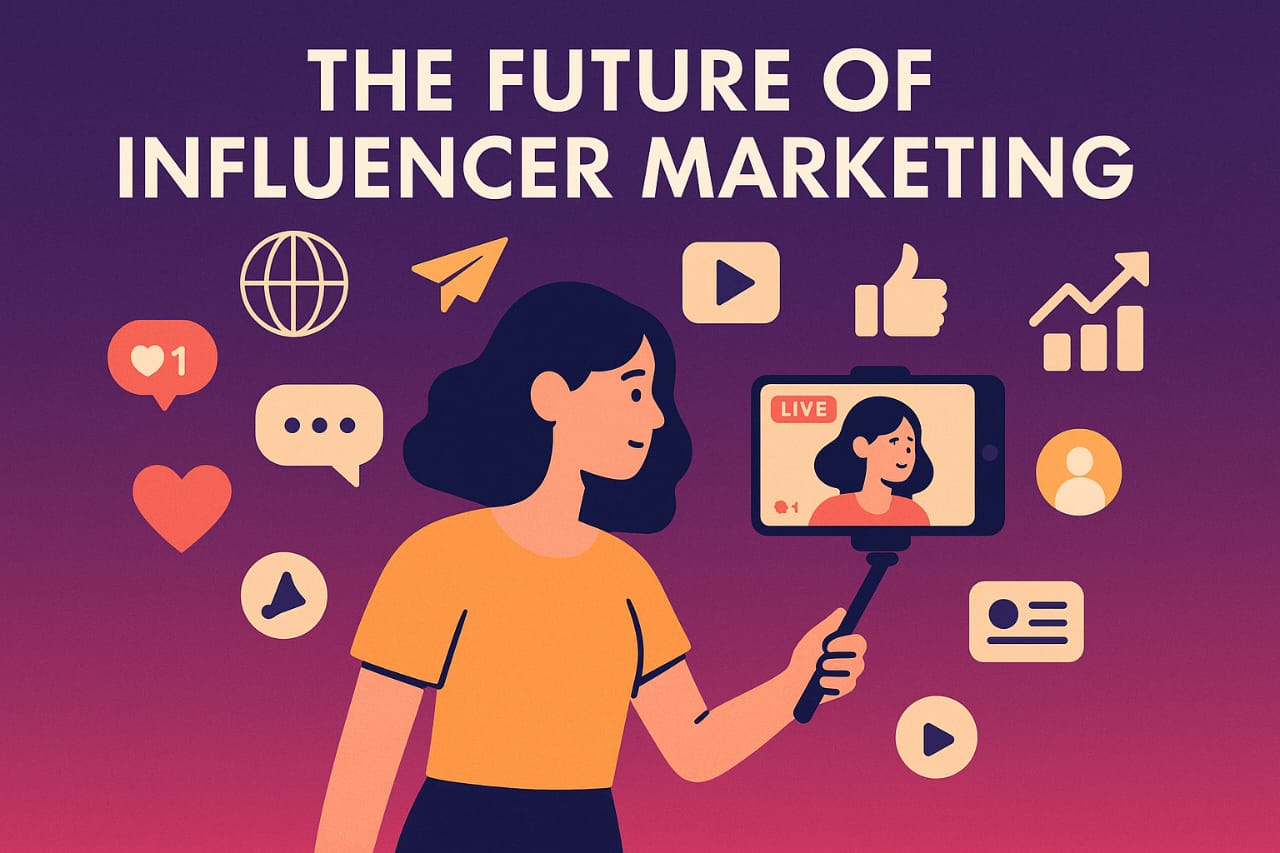
Influencer marketing has turned into one of the most in-demand methods by which brands interact with their followers.
From movie stars to online influencers, influencer marketing propels products, fosters trust, and sells. But along with the transformation of the web, the fate of influencer marketing is changing as well.
Let’s look at where influencer marketing is going in the next few years.
1. Increased Use of Micro and Nano Influencers
In the past, brands used to mostly work with large influencers who used to have millions of followers. Recently, however, most companies have turned to micro-influencers (10K–100K followers) and nano-influencers (less than 10K followers). They have higher engagement rates and are closer to their audience.
Micro-influencers also cost less and do better because their followers are more loyal to them.
2. Authenticity Over Perfection
Individuals are sick of over-polished, “insincere” content. Audiences now crave honest, genuine opinions. That’s why influencers who post personal anecdotes, behind-the-scenes footage, and genuine experiences are gaining more momentum.
The future of successful influencer campaigns is to be more authentic and less aspirational, photoshopped perfection.
3. Video Will Dominate
Video content—in the form of short-form content like TikTok, Instagram Reels, and YouTube Shorts—is becoming more prominent. They’re fun, immersive, and best for telling stories.
YouTubers and influencers creating creative, fast-paced, and captivating content are going to rule the place. Companies will have to align with this type of content in order to remain in relevance.
4. AI and Virtual Influencers
Artificial Intelligence (AI) is also being harnessed to produce virtual influencers—AI individuals with personalities, followers, and even endorsements. These AI influencers are able to Tweet 24/7 without fatigue and adhere to brand style flawlessly.
Others adore this technology while others enjoy the traditional human influencers. Both will most likely exist together side by side in the foreseeable future.
5. More Emphasis on Outcome and ROI
As influencer marketing gets larger and larger, brands are getting more and more serious about measurement. Rather than tracking likes and comments, businesses want to see the number of sales, leads, or website visitors that originated from an influencer.
That means influencers have to demonstrate value with hard data.
Final Thoughts
Influencer marketing isn’t going away—it’s just evolving. In the future, we’ll see a focus on smaller influencers, honest content, video storytelling, and smart data tracking. For brands and influencers alike, the key to success will be building real connections with the audience.
